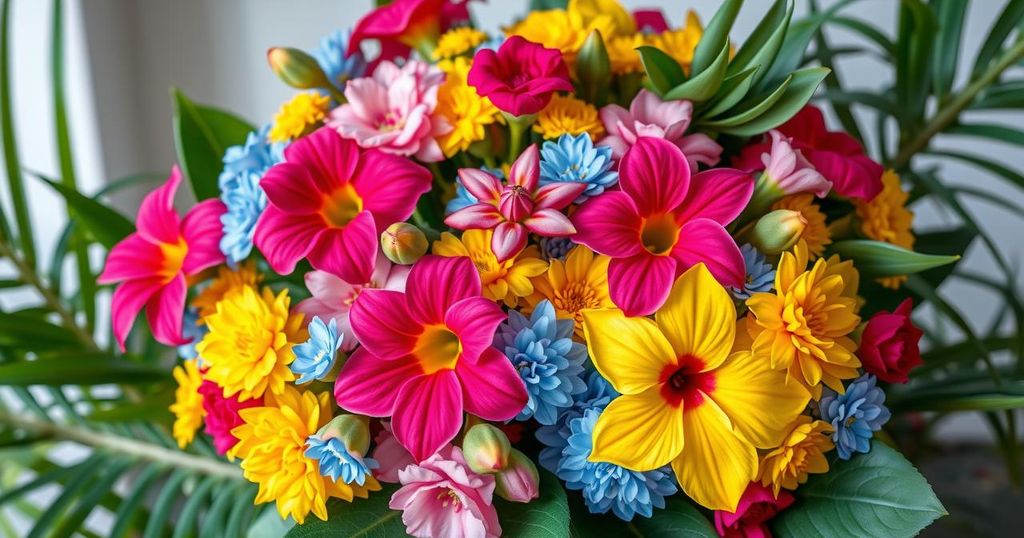Ecuador’s Flower Industry Faces Challenges from U.S. Tariffs

Ecuador’s flower industry faces tough challenges due to U.S. tariff increases on exports. Growers express concerns about livelihood impacts and seek government support to mitigate these economic pressures. A pressing situation calls for discussions on trade alternatives to ensure industry sustainability.
Ecuador’s flower industry is currently facing significant challenges due to the introduction of steep tariffs by the United States, which are affecting exports. Many flower growers in Ecuador are concerned about how these tariff increases will impact their livelihoods and the overall economic viability of this key export sector within the country. This situation has stirred considerable anxiety among local growers, prompting calls for government intervention and protection measures.
The flower industry is vital to Ecuador’s economy, with roses and other blooms being key products. These flowers are largely exported to the U.S., which has traditionally been Ecuador’s primary market. However, as tariffs increase, competitiveness in the U.S. market diminishes, forcing growers to rethink their strategies and possibly adjust their entire business models. Many local farms now face the difficult decision of potentially reducing their workforce to absorb rising costs.
Trade relations between the United States and Ecuador have fluctuated, but the current developments are striking a particularly harsh blow. According to industry experts, if these tariffs remain in place, the impact could extend beyond the floral sector, affecting associated industries and livelihoods tied to the flower business. It is a situation that several stakeholders are calling for urgent discussions on trade pathways.
In response to the operational challenges posed by tariffs, some growers are advocating for governmental support. They are urging both local and national authorities to seek alternatives such as trade negotiations or subsidies, which could lessen the burden placed on their business operations. The hope is that with appropriate action, an equilibrium can be struck that allows the Ecuadorian flower industry to thrive despite international pressures.
Overall, the ramifications of U.S. tariff policies are proving to be profound for Ecuador’s flower growers, putting at risk an entire industry intimately linked not only to regional economies but also to cultural identities. The situation remains fluid, prompting ongoing discussions among stakeholders about possible solutions to mitigate the effects of these tariffs and ensure the sustainability of flowers as a leading export.
In conclusion, Ecuador’s flower growers are under significant strain following the introduction of U.S. tariffs, which threaten their competitiveness in the vital export market. The resultant economic challenges highlight the importance of potential government action to support the industry. Without strategic interventions, the long-term sustainability of Ecuador’s flower sector remains uncertain, raising serious concerns among growers and stakeholders across the board.
Original Source: www.goshennews.com







